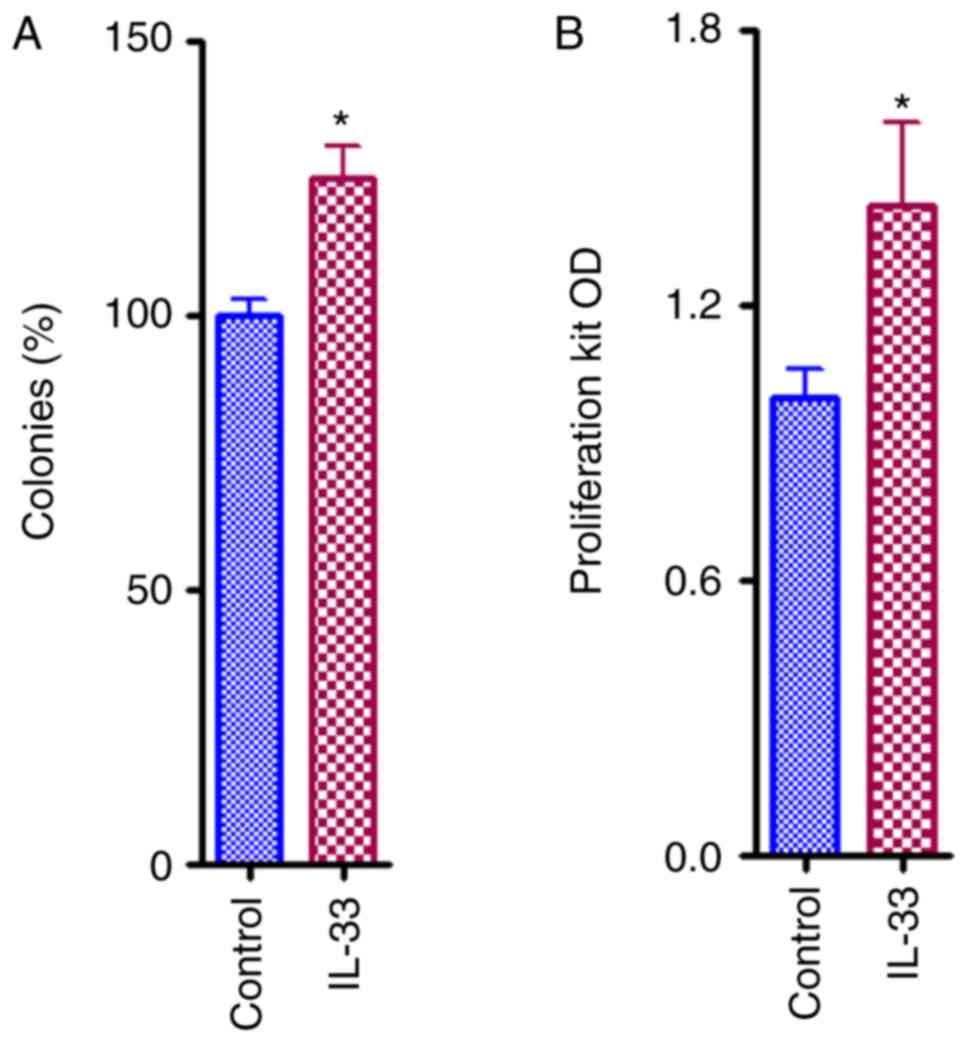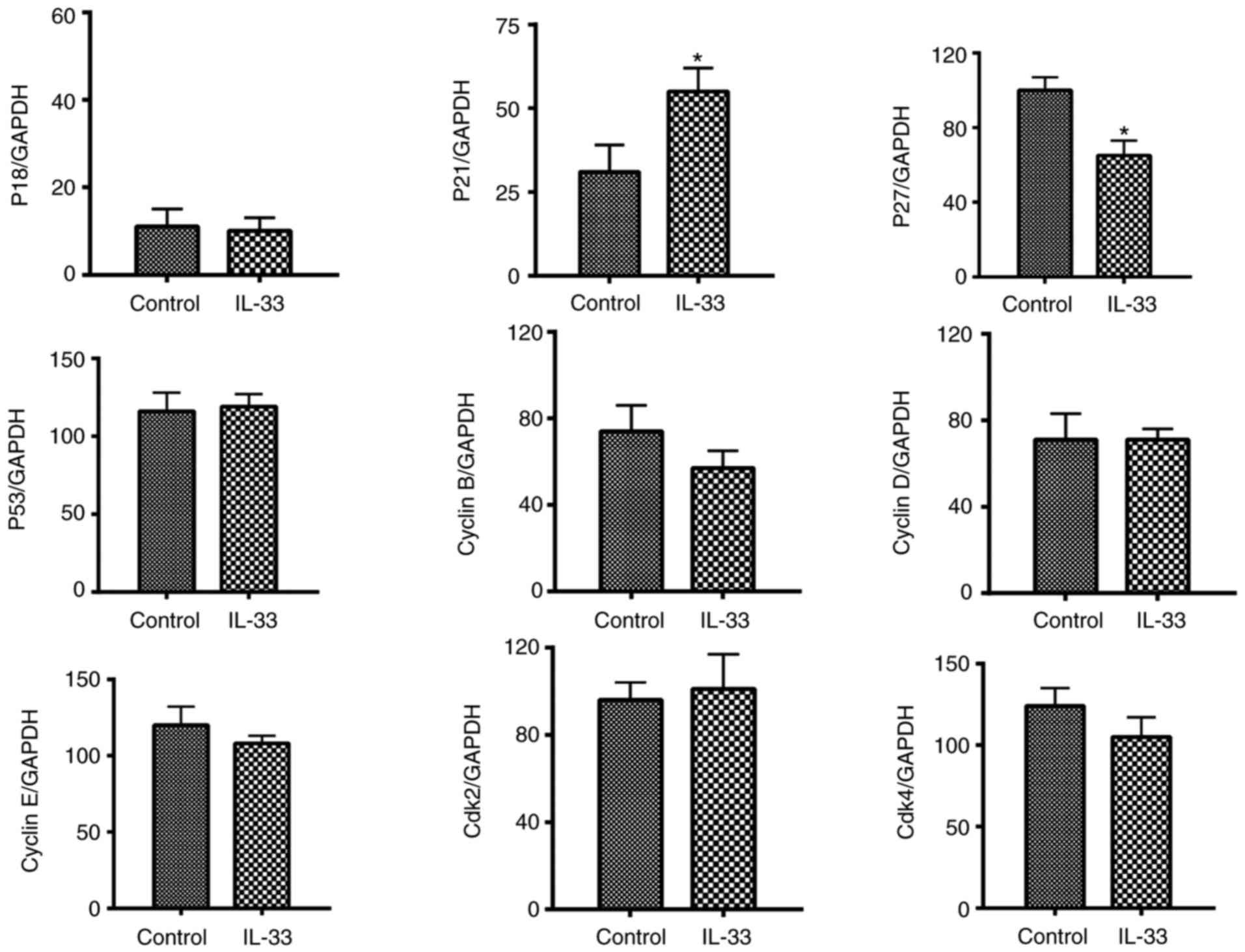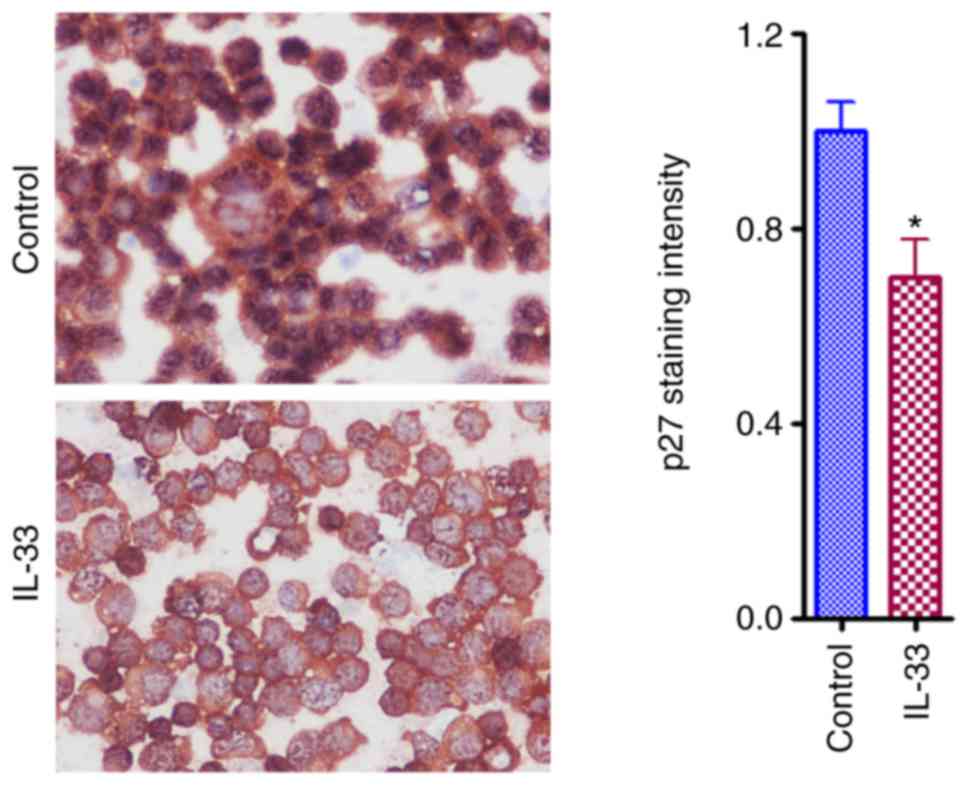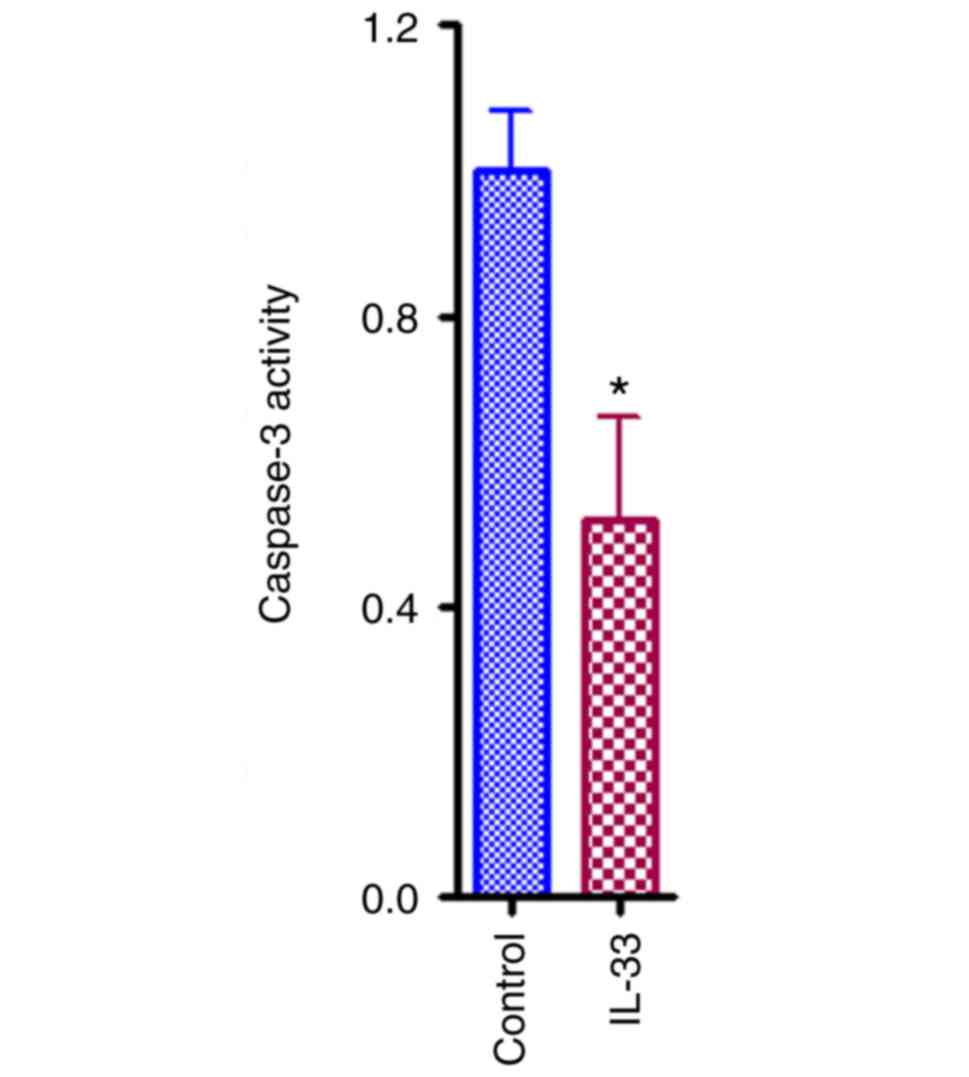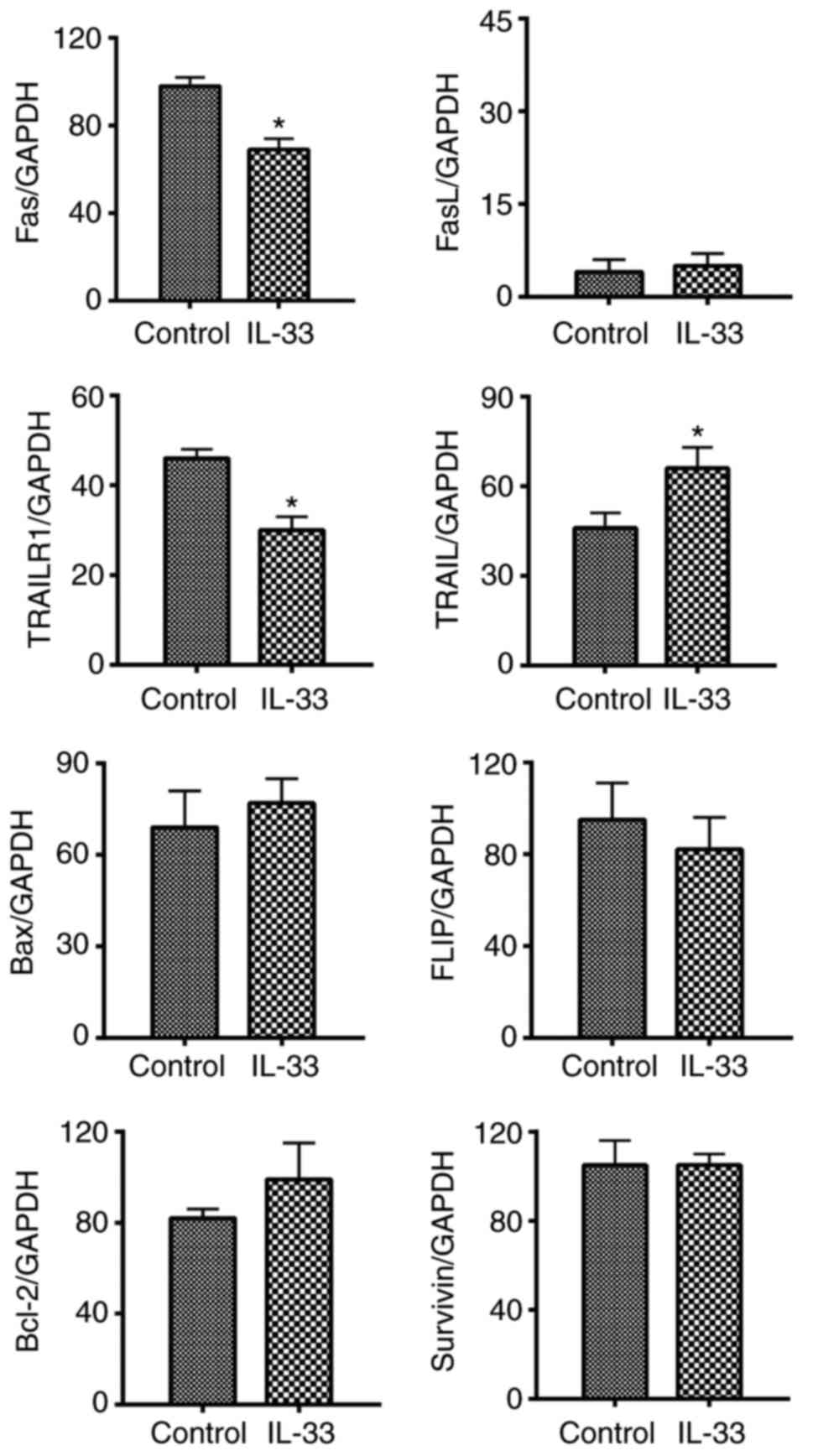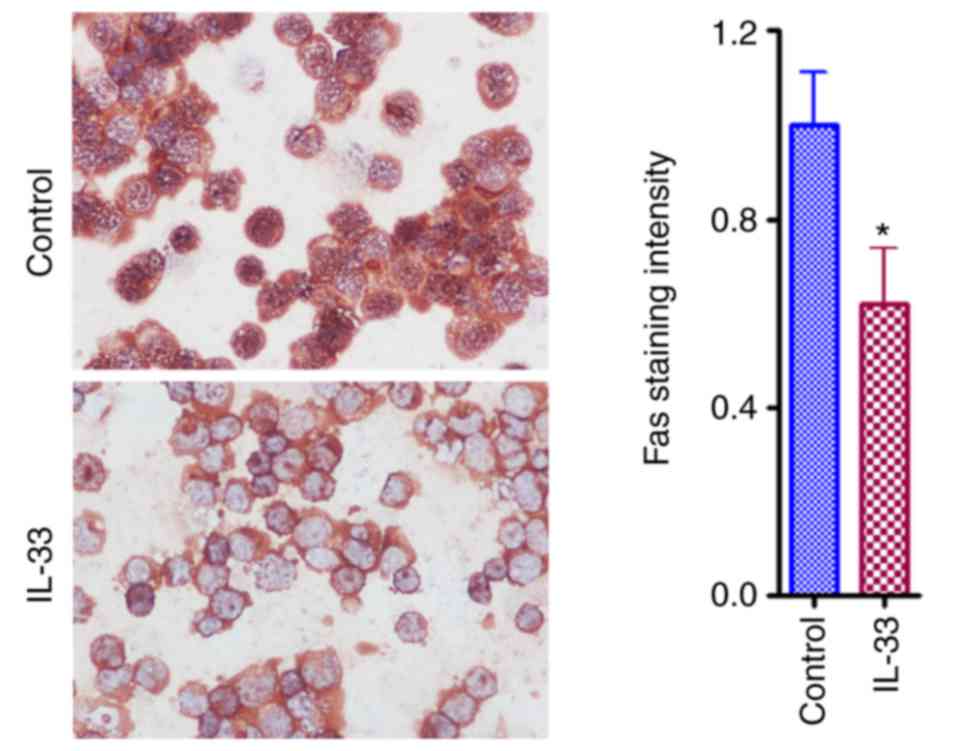|
1
|
Lataifeh I, Marsden DE, Robertson G,
Gebski V and Hacker NF: Presenting symptoms of epithelial ovarian
cancer. Aust N Z J Obstet Gynaecol. 45:211–214. 2005. View Article : Google Scholar : PubMed/NCBI
|
|
2
|
Vine MF, Calingaert B, Berchuck A and
Schildkraut JM: Characterization of prediagnostic symptoms among
primary epithelial ovarian cancer cases and controls. Gynecol
Oncol. 90:75–82. 2003. View Article : Google Scholar : PubMed/NCBI
|
|
3
|
Orsulic S, Li Y, Soslow RA, Vitale-Cross
LA, Gutkind JS and Varmus HE: Induction of ovarian cancer by
defined multiple genetic changes in a mouse model system. Cancer
Cell. 1:53–62. 2002. View Article : Google Scholar : PubMed/NCBI
|
|
4
|
Moss HA, Berchuck A, Neely ML, Myers ER
and Havrilesky LJ: Estimating cost-effectiveness of a multimodal
ovarian cancer screening program in the United States: Secondary
analysis of the UK collaborative trial of ovarian cancer screening
(UKCTOCS). JAMA Oncol. 4:190–195. 2018. View Article : Google Scholar : PubMed/NCBI
|
|
5
|
Sporn MB: The war on cancer. Lancet.
347:1377–1381. 1996. View Article : Google Scholar : PubMed/NCBI
|
|
6
|
Schmitz J, Owyang A, Oldham E, Song Y,
Murphy E, McClanahan TK, Zurawski G, Moshrefi M, Qin J, Li X, et
al: IL-33, an interleukin-1-like cytokine that signals via the IL-1
receptor-related protein ST2 and induces T helper type 2-associated
cytokines. Immunity. 23:479–490. 2005. View Article : Google Scholar : PubMed/NCBI
|
|
7
|
Sanada S, Hakuno D, Higgins LJ, Schreiter
ER, McKenzie AN and Lee RT: IL-33 and ST2 comprise a critical
biomechanically induced and cardioprotective signaling system. J
Clin Invest. 117:1538–1549. 2007. View
Article : Google Scholar : PubMed/NCBI
|
|
8
|
Li J, Razumilava N, Gores GJ, Walters S,
Mizuochi T, Mourya R, Bessho K, Wang YH, Glaser SS, Shivakumar P
and Bezerra JA: Biliary repair and carcinogenesis are mediated by
IL-33-dependent cholangiocyte proliferation. J Clin Invest.
124:3241–3251. 2014. View
Article : Google Scholar : PubMed/NCBI
|
|
9
|
Liu X, Zhu L, Lu X, Bian H, Wu X, Yang W
and Qin Q: IL-33/ST2 pathway contributes to metastasis of human
colorectal cancer. Biochem Biophys Res Commun. 453:486–492. 2014.
View Article : Google Scholar : PubMed/NCBI
|
|
10
|
Jovanovic IP, Pejnovic NN, Radosavljevic
GD, Pantic JM, Milovanovic MZ, Arsenijevic NN and Lukic ML:
Interleukin-33/ST2 axis promotes breast cancer growth and
metastases by facilitating intratumoral accumulation of
immunosuppressive and innate lymphoid cells. Int J Cancer.
134:1669–1682. 2014. View Article : Google Scholar : PubMed/NCBI
|
|
11
|
Hu LA, Fu Y, Zhang DN and Zhang J: Serum
IL-33 as a diagnostic and prognostic marker in non-small cell lung
cancer. Asian Pac J Cancer Prev. 14:2563–2566. 2013. View Article : Google Scholar : PubMed/NCBI
|
|
12
|
Gao X, Wang X, Yang Q, Zhao X, Wen W, Li
G, Lu J, Qin W, Qi Y, Xie F, et al: Tumoral expression of IL-33
inhibits tumor growth and modifies the tumor microenvironment
through CD8+ T and NK cells. J Immunol. 194:438–445.
2015. View Article : Google Scholar : PubMed/NCBI
|
|
13
|
Feng W, Shi P, Lei B, Chai X and Tan C:
IL-33 influenced the development of colorectal cancer via
regulating Fra-1. Int J Clin Exp Pathol. 10:467–472. 2017.
|
|
14
|
Fang Y, Zhao L, Xiao H, Cook KM, Bai Q,
Herrick EJ, Chen X, Qin C, Zhu Z, Wakefield MR, et al: IL-33 acts
as a foe to MIA PaCa-2 pancreatic cancer. Med Oncol. 34:232017.
View Article : Google Scholar : PubMed/NCBI
|
|
15
|
Tong X, Barbour M, Hou K, Gao C, Cao S,
Zheng J, Zhao Y, Mu R and Jiang HR: Interleukin-33 predicts poor
prognosis and promotes ovarian cancer cell growth and metastasis
through regulating ERK and JNK signaling pathways. Mol Oncol.
10:113–125. 2016. View Article : Google Scholar : PubMed/NCBI
|
|
16
|
Fang Y, DeMarco VG and Nicholl MB:
Resveratrol enhances radiation sensitivity in prostate cancer by
inhibiting cell proliferation and promoting cell senescence and
apoptosis. Cancer Sci. 103:1090–1098. 2012. View Article : Google Scholar : PubMed/NCBI
|
|
17
|
Fang Y, Herrick EJ and Nicholl MB: A
possible role for perforin and granzyme B in resveratrol enhanced
radiosensitivity of prostate cancer. J Androl. 33:752–760. 2012.
View Article : Google Scholar : PubMed/NCBI
|
|
18
|
Fang Y, Chen X, Bai Q, Qin C, Mohamud AO,
Zhu Z, Ball TW, Ruth CM, Newcomer DR and Herrick EJ: IL-9 inhibits
HTB-72 melanoma cell growth through upregulation of p21 and TRAIL.
J Surg Oncol. 111:969–974. 2015. View Article : Google Scholar : PubMed/NCBI
|
|
19
|
Fang Y, Sharp GC, Yagita H and
Braley-Mullen H: A critical role for TRAIL in resolution of
granulomatous experimental autoimmune thyroiditis. J Pathol.
216:505–513. 2008. View Article : Google Scholar : PubMed/NCBI
|
|
20
|
Fang Y, Wei Y, Demarco V, Chen K, Sharp GC
and Braley-Mullen H: Murine FLIP transgene expressed on thyroid
epithelial cells promotes resolution of granulomatous experimental
autoimmune thyroiditis in DBA/1 mice. Am J Pathol. 170:875–887.
2007. View Article : Google Scholar : PubMed/NCBI
|
|
21
|
Fang Y, Bradley MJ, Cook KM, Herrick EJ
and Nicholl MB: A potential role for resveratrol as a radiation
sensitizer for melanoma treatment. J Surg Res. 183:645–653. 2013.
View Article : Google Scholar : PubMed/NCBI
|
|
22
|
Fang Y, Bradley MJ, Bai Q, Cook KM,
Herrick EJ and Nicholl MB: Hydrogen peroxide enhances
radiation-induced apoptosis and inhibition of melanoma cell
proliferation. Anticancer Res. 33:1799–1807. 2013.PubMed/NCBI
|
|
23
|
Brucks JA: Ovarian cancer. The most lethal
gynecologic malignancy. Nurs Clin North Am. 27:835–845.
1992.PubMed/NCBI
|
|
24
|
Siegel RL, Miller KD and Jemal A: Cancer
statistics, 2016. CA Cancer J Clin. 66:7–30. 2016. View Article : Google Scholar : PubMed/NCBI
|
|
25
|
Daniilidis A and Karagiannis V: Epithelial
ovarian cancer. Risk factors, screening and the role of
prophylactic oophorectomy. Hippokratia. 11:63–66. 2007.PubMed/NCBI
|
|
26
|
Landen CN Jr, Birrer MJ and Sood AK: Early
events in the pathogenesis of epithelial ovarian cancer. J Clin
Oncol. 26:995–1005. 2008. View Article : Google Scholar : PubMed/NCBI
|
|
27
|
Kurman RJ and Shih IeM: The origin and
pathogenesis of epithelial ovarian cancer-a proposed unifying
theory. Am J Surg Pathol. 34:433–443. 2010. View Article : Google Scholar : PubMed/NCBI
|
|
28
|
Roett MA and Evans P: Ovarian cancer: An
overview. Am Fam Physician. 80:609–616. 2009.PubMed/NCBI
|
|
29
|
Lalrinpuii E, Bhageerathy PS, Sebastian A,
Jeyaseelan L, VinothaThomas, Thomas A, Chandy R and Peedicayil A:
Ovarian cancer in young women. Indian J Surg Oncol. 8:540–547.
2017. View Article : Google Scholar : PubMed/NCBI
|
|
30
|
Pignata S, Cannella L, Leopardo D, Pisano
C, Bruni GS and Facchini G: Chemotherapy in epithelial ovarian
cancer. Cancer Lett. 303:73–83. 2011. View Article : Google Scholar : PubMed/NCBI
|
|
31
|
Patil US, Jaydeokar AV and Bandawane DD:
Immunomodulators: A pharmacological review. Int J Pharm Pharm Sci.
4 Suppl 1:S30–S36. 2012.
|
|
32
|
Fu H, Hu Z, Wen J, Wang K and Liu Y:
TGF-beta promotes invasion and metastasis of gastric cancer cells
by increasing fascin1 expression via ERK and JNK signal pathways.
Acta Biochim Biophys Sin. 41:648–656. 2009. View Article : Google Scholar : PubMed/NCBI
|
|
33
|
Deryabin PI, Borodkina AV, Nikolsky NN and
Burova EB: Relationship between p53/p21/Rb and MAPK signaling
pathways in human endometrium-derived stem cells under oxidative
stress. Tsitologiia. 57:788–795. 2015.PubMed/NCBI
|
|
34
|
Chen X, Lu K, Timko NJ, Weir DM, Zhu Z,
Qin C, Mann JD, Bai Q, Xiao H, Nicholl MB, et al: IL-33 notably
inhibits the growth of colon cancer cells. Oncol Lett. 16:769–774.
2018.PubMed/NCBI
|



